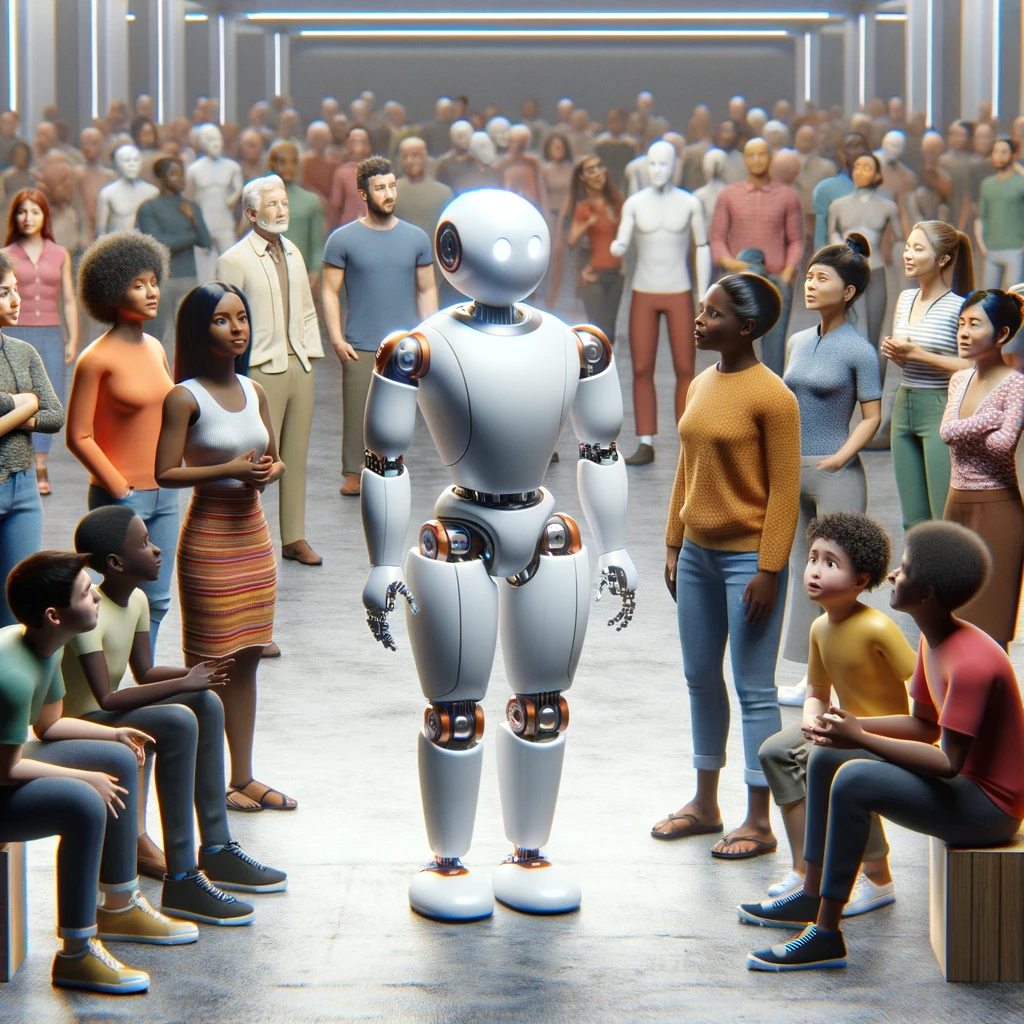Robots have become an integral part of our lives, from assisting people with autism to aiding in education and healthcare. However, a concerning issue has emerged in the world of robotics — the overwhelming prevalence of white robots. Let’s explore why this phenomenon exists and its implications for human-robot interaction.
Robots and the lack of diversity
Social robots, designed to interact with diverse groups of people, are gaining popularity in various fields. These robots aim to assist individuals with autism, special needs, and physical rehabilitation. However, a critical problem arises when these robots do not reflect the diversity of society.
The prevalence of white robots
Many social robots, such as Kaspar, Nao, Pepper, and iCub, are clad with shiny, white plastic. This design choice has led to questions about why these robots tend to be white when they interact with people from various racial backgrounds.
Existing design constraints
One reason behind this issue is that most robots are not developed from scratch. Instead, engineering labs purchase pre-existing robots and adapt them with custom software. These design choices are influenced by the original developers and tend to follow a clinical, clean look with reflective white surfaces, similar to other technology products.
The engineered imaginary
The cultural perception of what robots should look like, often derived from science fiction, plays a significant role in shaping their design. The cultural imaginary is contrasted with the engineered imaginary, which refers to how engineering teams view robot bodies. These perceptions have led to gendered and racial assumptions in the design of service robots.
Historical roots
The cultural image of robots as white and usually female dates back to European antiquity and has been reinforced through literature and films. Fictional robots have often been feminized and made servile, contributing to this long-standing perception.
Ancient influences
The idea of white robotic figures can be traced back to ancient Rome, where a poem in Ovid’s “Metamorphoses” described a statue of Galatea as “of snow-white ivory.” This perception of whiteness has endured over centuries.
Diversity and inclusion in human-robot interaction
Addressing this issue requires a comprehensive approach to diversity and inclusion in human-robot interaction. Engineers, designers, and social scientists must work together to create a more inclusive “engineered imaginary.”
Encouraging cross-cultural sensitivity
One aspect of promoting diversity in robots is not only making their appearance reflect the diversity of their users but also diversifying forms of interaction. This includes gestures and touch, which vary between cultures. By working to incorporate cross-cultural sensitivity, human-robot interaction can become less intimidating and more comfortable for a broader range of individuals.
The role of social science methods
Social science methods can play a crucial role in shaping the future of human-robot interaction. Collaboration between roboticists, designers, and social scientists can help bridge the gap between technology and human experiences.
Beyond superficial changes
Merely encasing robots in brown or black plastic does not address the root issue. True diversity and inclusion require a deeper understanding of the diverse needs and experiences of robot users.
The prevalence of white robots in today’s society is a reflection of historical perceptions and design choices. To create a more inclusive and diverse human-robot interaction, it is essential to move beyond surface-level changes and embrace a multidisciplinary approach that values cross-cultural sensitivity and inclusivity. By doing so, we can ensure that robots serve the needs of all individuals, regardless of their background or identity.





